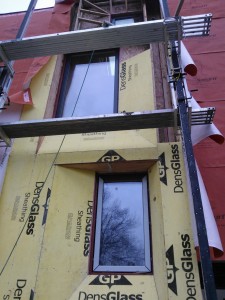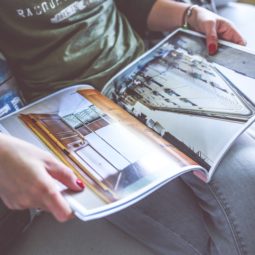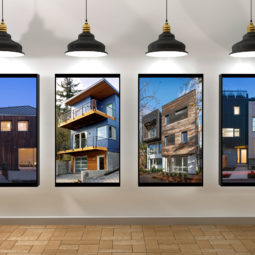We’ve been toiling away on our first passive house project for several months now, and are starting to see the light at the end of the tunnel. Well, almost. I’ve had the opportunity to discuss the project in person with several people but have been remiss about blogging on it for wider consumption, so I thought I would share some highlights.
So what is passive house? I’ll just gloss over that concept, since you could find more info here and here. It is a building standard that results in unsurpassed comfort & energy efficiency. For the builder it means hitting a very airtight test number (0.6 ACH50), which is about ten times the current code required air leakage maximum (i.e., how drafty your new house can legally be). It also means optimizing the placement of windows to capture solar gains, and procuring super high performance windows. Ours came from Lithuania, made by a company called Intus. So far so good, though we are still waiting on the last couple windows to be delivered. They are comparatively heavy, with triple glazing and steel frames, so instead of packing them up the stairs manually, we had a crane help lift them into place.
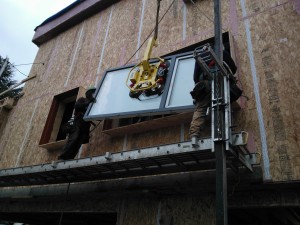
In this picture, you can also see some of the double wall system. The taped sheathing is OSB with Siga tape, and Joint & Seam compound at some of the joints. Also visible is the plywood window box construction. We subsequently added vertical TJIs on top of the taped OSB, for our outer wall. The OSB layer is the air barrier, and it is the location that stops air leakage. This house will be entirely draft free. Behind the OSB, there is a standard structural 2×6 wall, so in total we have 5.5″ + 9.5″ = 15″ wall cavity, all of which will be blown in dense pack insulated.
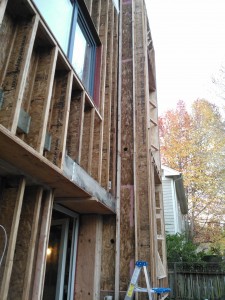
Here’s that same window, but now with the outer TJI wall built around it. As you can see the windows are recessed into the wall system, not just stuck right on the outside of the wall in line with the siding. It will be more apparent once the siding is installed.
Is all of this overkill? Current energy codes suggest that a 5.5″ wall cavity is sufficient for our climate – why do more? most builders never get beyond this question. In my view, 5.5″ inches of insulation is insufficient for comfort, not to mention the overuse of precious natural resources (oil, coal, hydro, pick your source), and doing your part to reduce climate change might only be a few more inches of insulation. Passive House may be overkill, it is after all, a very strict high standard that barely anyone adheres to, mostly because it’s perceived to be too difficult or expensive. I figure the only way to find out is to try it and see how it works.
Siding is going up. We have a vapor open system, so it can breath from the air barrier out or in. I will update as the project progresses! If you have any interest in Passive House in Seattle or this particular house, feel free to contact us.
